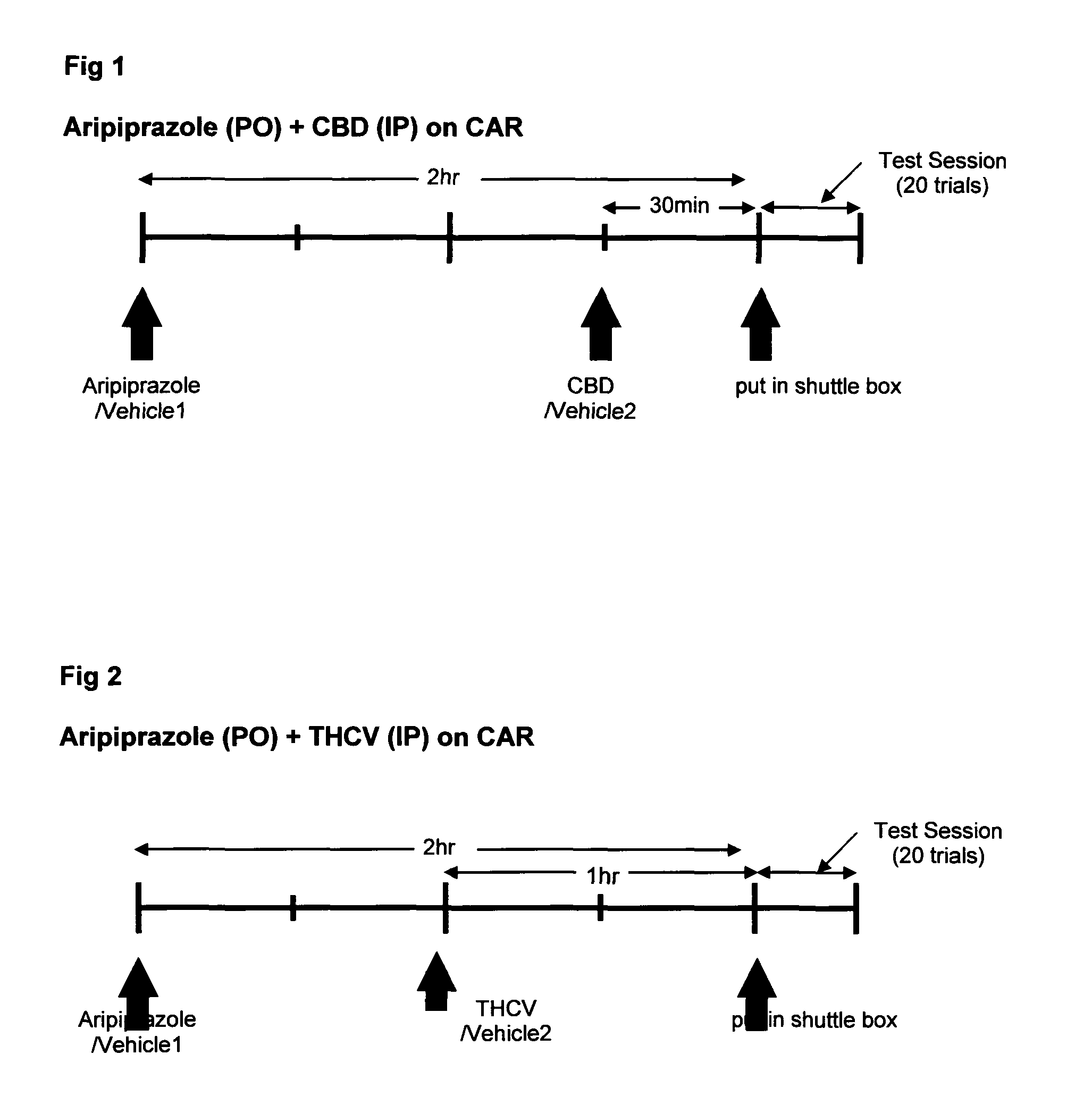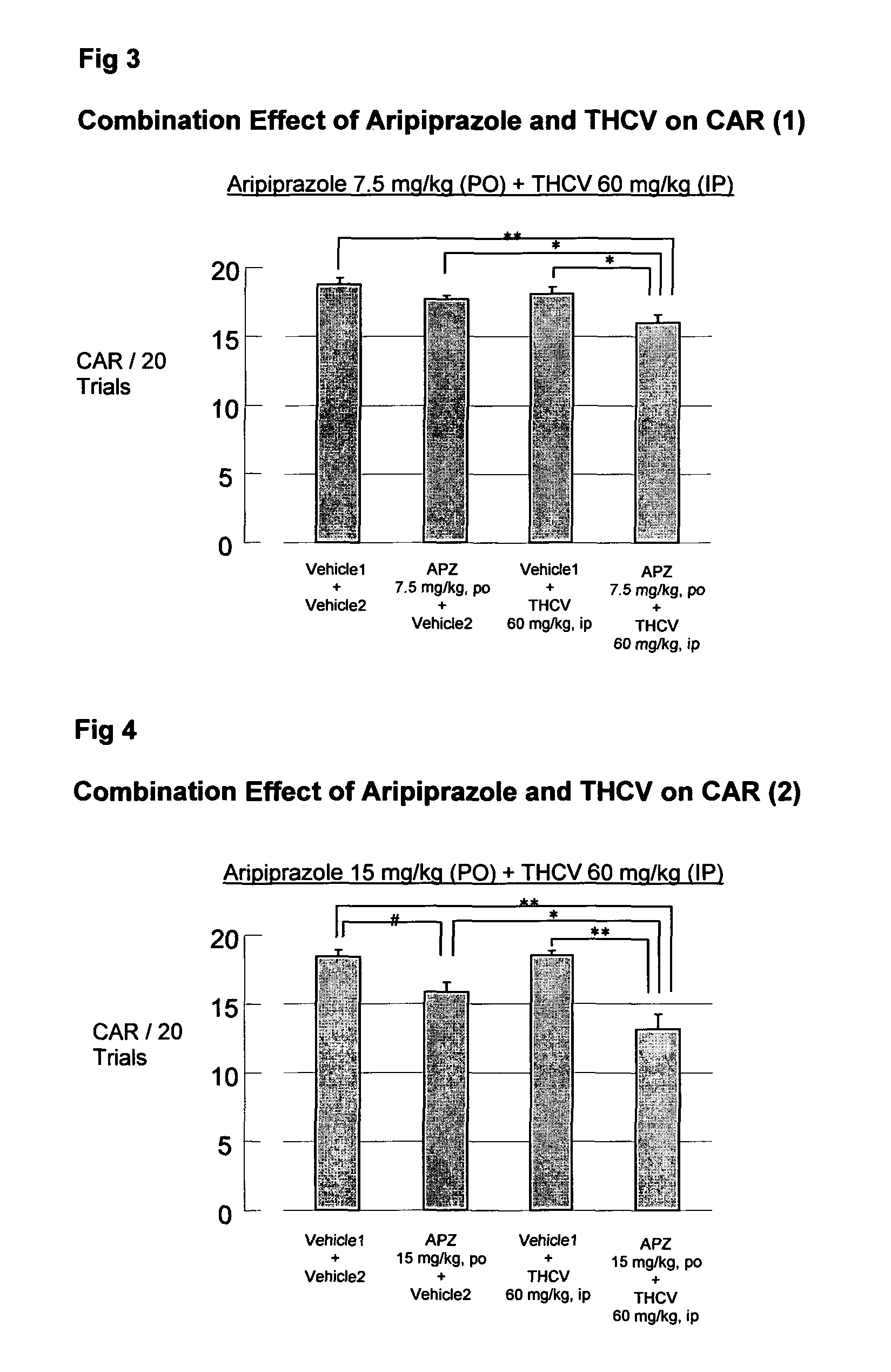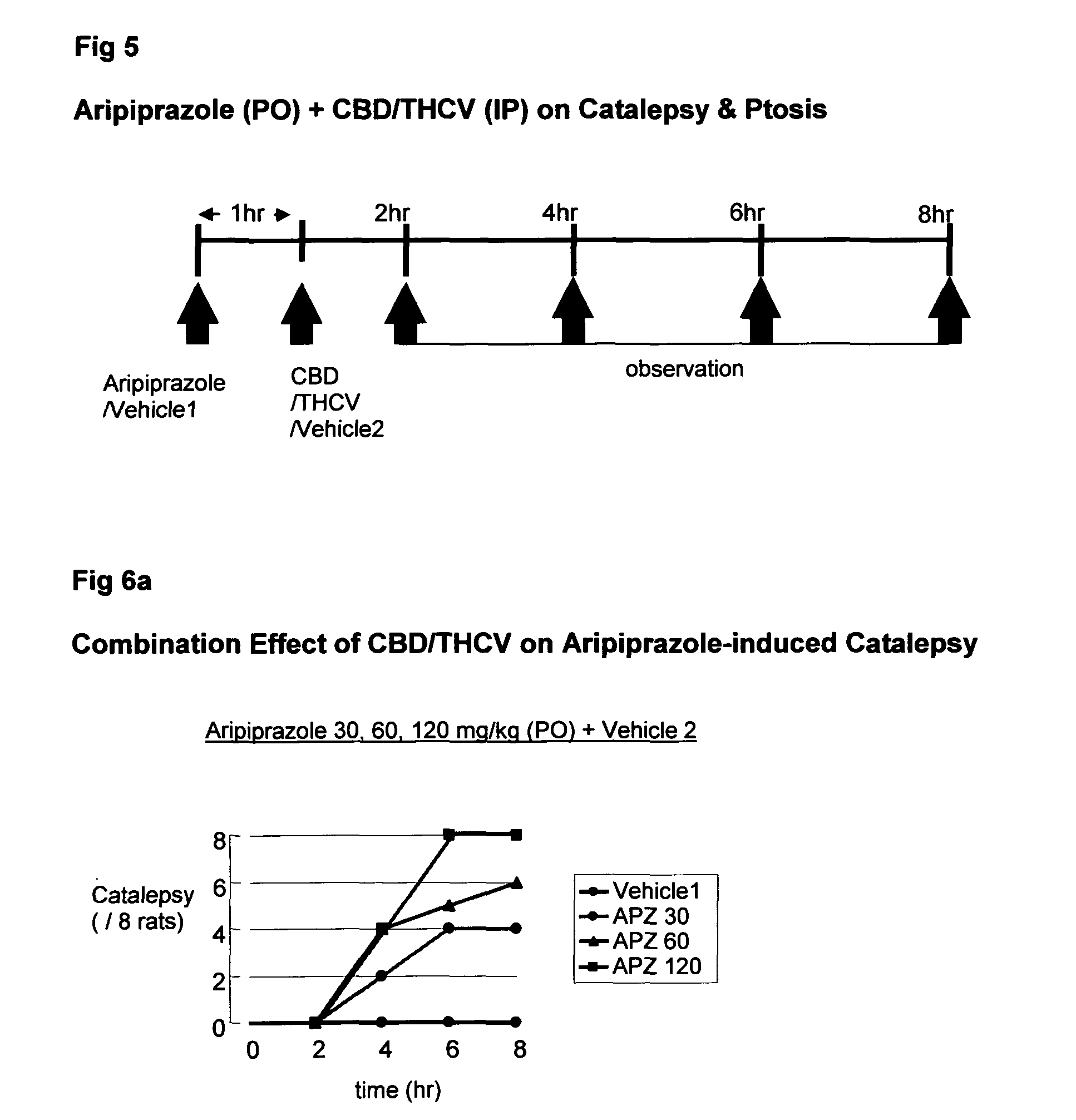Use of cannabinoids in combination with an anti-psychotic medicament
a cannabinoid and anti-psychotic technology, applied in the direction of biocide, drug composition, metabolism disorder, etc., can solve the problems of schizophrenia patients also having difficulty in logical thought and responding with normal emotions, many patients suffering with mood, daily function or intrusion of thoughts, etc., to achieve sufficient activity, improve activity, and reduce the effect of activity
- Summary
- Abstract
- Description
- Claims
- Application Information
AI Technical Summary
Benefits of technology
Problems solved by technology
Method used
Image
Examples
example 1
[0108]An acute single dose study was undertaken where dietary-induced obese mice were dosed with either:[0109]Pure THCV (0.3 mg / kg)+CBD BDS (CBD at 0.3 mg / kg); or[0110]Pure THCV (3.0 mg / kg)+CBD BDS (CBD at 3.0 mg / kg).
[0111]Dietary-induced obese mice are a standard model used to evaluate agents likely to affect metabolic symptoms including obesity, type 1 or 2 diabetes and dyslipidemia. CB1 antagonists are being examined as potential anti-obesity agents and rimonabant has been licensed. Rimonabant shows anti-obesity effects in man and rodent models. Although in rodent models it reduces food intake over the first few days, the long term anti-obesity effect seems to be more related to energy expenditure increases, possibly mediated via increased release of adiponectin from adipose tissue.
[0112]THCV and CBD are natural products with significant activity at the CB1 receptor. The example described here was designed to explore anti-obesity and the consequential metabolic effects by measure...
example 2
[0118]A chronic dosing, 28-day study was undertaken where dietary-induced obese mice were dosed daily at 09:00 by oral gavage with either:[0119]Pure THCV (0.3 mg / kg)+CBD BDS (CBD at 0.3 mg / kg); or[0120]Pure THCV (3.0 mg / kg)+CBD BDS (CBD at 3.0 mg / kg).
[0121]Animals were acclimatised during Days 1-2 of the study and dosing was started on Day 3.
[0122]Measurements were taken to provide data for the following:[0123]Food and water intake (daily);[0124]Body weight (twice weekly);[0125]24 h energy expenditure (Days 3 and 10);[0126]Oral Glucose Tolerance Test (OGTT, glucose load 3 g / kg) in 5 h-fasted mice (Days 7 and 21);[0127]Thermic response to a mixed meal (Day 17)[0128]Body composition (% body fat) by Dexascan in anaesthetised mice (Day 28)[0129]Nose-anus length measurement (Day 28)[0130]Blood sample from fed mice for measurement of glucose, lactate, insulin, triglycerides, cholesterol, HDL-cholesterol (Day 28);[0131]Blood sample from fasted mice for measurement of glucose, free fatty ac...
example 3
[0168]The example described below investigated whether the cannabinoids, cannabidiol (CBD) and tetrahydrocannabivarin (THCV), act via the peroxisome proliferator-activated receptor gamma (PPARγ), which is known to be activated by Δ9-tetrahydrocannabinol.
[0169]Agonists of the PPARγ isoform improve insulin sensitivity and are often used in the management of type 2 diabetes. Additionally, PPARγ agonists have been shown to have positive cardiovascular effects, which include in vitro evidence of increased availability of nitric oxide (NO), and in vivo reductions in blood pressure and attenuation of atherosclerosis.
[0170]Some of the beneficial effects of PPARγ ligands are brought about by the anti-inflammatory actions of PPARγ activation, including inhibition of pro-inflammatory cytokines, increasing anti-inflammatory cytokines, and inhibition of inducible nitric oxide synthase (iNOS) expression. It is therefore thought that the use of PPARγ ligands might be a useful treatment option in t...
PUM
| Property | Measurement | Unit |
|---|---|---|
| temperature | aaaaa | aaaaa |
| chromatographic purity | aaaaa | aaaaa |
| chromatographic purity | aaaaa | aaaaa |
Abstract
Description
Claims
Application Information
 Login to View More
Login to View More - R&D
- Intellectual Property
- Life Sciences
- Materials
- Tech Scout
- Unparalleled Data Quality
- Higher Quality Content
- 60% Fewer Hallucinations
Browse by: Latest US Patents, China's latest patents, Technical Efficacy Thesaurus, Application Domain, Technology Topic, Popular Technical Reports.
© 2025 PatSnap. All rights reserved.Legal|Privacy policy|Modern Slavery Act Transparency Statement|Sitemap|About US| Contact US: help@patsnap.com



